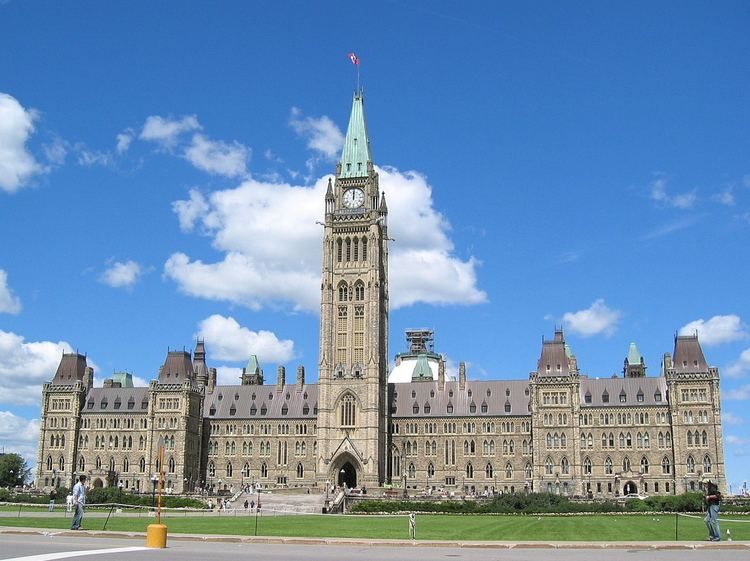Citation 4 George VI, Chap. 13 Date assented to June 21, 1940 | ||
 | ||
The National Resources Mobilization Act, 1940 (4 George VI, Chap. 13) was a statute of the Parliament of Canada passed to provide for better planning of a much greater Canadian war effort, both overseas and in military production at home.
Contents
Scope
Modelled on the British Emergency Powers (Defence) Act 1939, as amended in 1940, it gave the Canadian government the power to
do and authorize such acts and things, and make from time to time such orders and regulations, requiring persons to place themselves, their services and their property at the disposal of His Majesty in right of Canada, as may be deemed necessary or expedient for securing the public safety, the defence of Canada, the maintenance of public order, or the efficient prosecution of the war, or for maintaining supplies or services essential to the life of the community.
This was the basis of all organization for Canada's war production.
Preparation for military readiness
In order to prepare the population for military service, provision was made under the Act for:
Employment control
The Act was also used to ensure greater efficiency that was required in a wartime economy by:
Nature of conscription
The Act permitted conscripts (known as "R men" or "zombies") to be used for home defence only and not to be deployed overseas. The "Zombies" were so-called because they were soldiers who could not fight overseas, making them like the zombies of Haitian mythology who were neither dead nor alive, but rather somewhere in-between. The first overseas campaign that NRMA recruits were involved in was the recapture of the island of Kiska in August 1943, as the government determined that using conscripts for the defence of North America was within the meaning of the Act. Until November 1944, only those Canadians who had volunteered were sent overseas. The rule prohibiting "Zombies" from being sent to fight overseas was modified in August 1942 to permit the government to send conscripts overseas, after a plebiscite was held on the matter on 27 April 1942 where the majority of people in 8 English-speaking provinces voted to release Prime Minister William Lyon Mackenzie King from his promise not to send the Zombies overseas. Quebec voted by a large majority against oversees conscription in the referendum. Such an order, authorizing the transfer of 16,000 conscripts to England, was not made until November 1944. This precipitated the Conscription Crisis of 1944, and resulted in several Quebec Liberal MPs leaving the party in protest. 9,667 NRMA recruits were sent to England, of which two-thirds only arrived after V-E Day.
The Zombies were widely disliked and regarded as cowards by the men who had volunteered for overseas service. The Zombies wore a black tie and collared shirt as part of their uniform while volunteers for overseas duties did not. In April 1945 when the men of the 1st Canadian Army were informed that henceforth they would now wear the Zombie black tie and collared shirt, the writer Farley Mowat serving with the Hastings and Prince Edward Regiment wrote: "the black tie itself was known as the Zombie tie, and the resentment of the volunteers, who were now ordered to wear this symbol of shame, was most outspoken."
